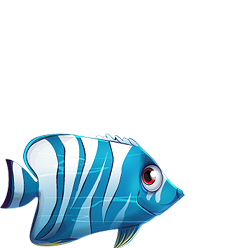Courses
SIA provides a variety of courses that cater for beginners to professionals. We pride ourselves on maintaining the highest standards of training and safety whilst enabling our courses to be cost effective, personalised and short duration.-

Discover Scuba Diving
Your first underwater experience... The PADI Discover Scuba Diving program lets a complete novice dive right in and experience the thrill of diving in easy pool-like conditions. During your adventure, your instructor will always be right with you. You'll review some basic theory on a flip chart, then a few scuba skills in very shallow water and finally swim off to experience an underwater adventure. Some people do the discover experience (also called the "resort course") many times rather than doing a certification course. Others think "Wow! How do I get certified?". We hope you love it and get hooked on SCUBA! -

Open Water Diver
Your passport to adventure! Dive into the PADI Open Water Diver course, the most popular dive program in the world! This is your ticket to a lifetime of fun, travel and amazing underwater experiences. The PADI Open Water course takes 2 days including pool dives and ocean dives. Let's dive! -

Advanced Open Water
Take the next step - explore new worlds! You've learned the basics, now see what diving really has to offer. The Advanced course includes deep and navigation dives, plus options like wreck or night dives. You can learn about marine life or try underwater photography. Learning has never been so much fun! The course takes just 2 days and includes 5 dives. -

Master Diver
The PADI Master Scuba Diver is the highest non-professional rating within PADI. To obtain this prestigious rating, you must be a Rescue Diver and you will complete 5 Specialty Diver courses of your choice. -

Enriched Air (Nitrox)
Dive longer with Nitrox, the magic gas! Nitrox is an enriched air blend of normal air with extra oxygen. You get longer dives than with air and many divers say they feel less tired after diving. Nitrox is now commonly available on dive boats worldwide and is especially useful on liveaboards. The course takes just 2 days - a bit of theory and then 2 dives, then you're ready for enriched air! -

Wreck Diver Course
What You Learn Techniques for diving exploring shipwrecks, and how to avoid common hazards How to research and learn the background of your favorite wrecks Wreck scuba diving equipment considerations Considerations and techniques for entering intact wrecks Experience in planning, organising and making at least four wreck dives under the supervision of your PADI Instructor -

Deep Diver Course
What You Learn Techniques for diving in the deeper range of 18-40 metres/ 60-130 feet Deep scuba diving equipment considerations Experience in planning, organising and making at least four deep dives under the supervision of your PADI Instructor -

Night Diver Course
The PADI Night Diver Course As the sun sets, you don your dive gear, slip on your scuba mask and bite down on your dive regulator. A deep breath and you step off the boat into the underwater night. Although youíve seen this reef many times before, this time you drop into a whole new world and watch it come to life under the glow of your dive light. -

Digital Underwater Photographer
Who can benefit from completing the course? The course is designed for anyone who wants to learn how to use a digital camera or video underwater and also helps improve the skills and knowledge of those who already have some experience with underwater digital imaging. The course is open to snorkelers and certified divers of all levels. -

Peak Performance Buoyancy
What You Learn How to trim your scuba gear so youíre perfectly balanced in the water Nuances in determining weight so youíre not too light nor too heavy by even a slight degree How to streamline to save air and move smoothly through the water How to hover effortlessly in both a vertical position and a horizontal position -

Boat Diver
What You Learn Learn the tips, tricks and ways to: Dive from boats ranging from small inflatables to giant live-aboards : how they differ from place to place gain experience and training from diving on boats in your local area Safely enter and exit the water : sometimes itís better to hand your gear up to the crew and then climb in the boat sometimes you just take off your fins and weights and walk up the ladder Stow your gear in the most appropriate areas Use surface lines to initiate or conclude your dives. Locate basic boat safety equipment -

Emergency Oxygen Provider
What You Learn You learn how to Recognise diving illnesses treatable by emergency oxygen Properly setup equipment Administer emergency oxygen -

Emergency First Responce (EFR)
The EFR course trains you in CPR and First Aid, preparing you for emergency situations that can occur in any milieu. It is a mandatory prerequisite to the PADI Rescue Diver course. -

Rescue Diver
Build your confidence. Rescue yourself and others! Enjoying your diving? Feeling comfortable in the water? Take the next step... Rescue Divers look beyond themselves and think about the safety and well being of other divers. Although this course is serious, it's always rewarding and fun! Over 3 days you cover theory, practice skills in shallow water and carry out rescue scenarios in the ocean. -

Dive Master
So you want to learn more? It's time to turn pro! As a DM trainee, you will expand your dive knowledge and fine tune your skills to professional level. PADI Divemaster training develops your leadership abilities, qualifying you to supervise dive activities and assist instructors with student divers. The course takes at least a couple of weeks, there's no fixed time limit.
